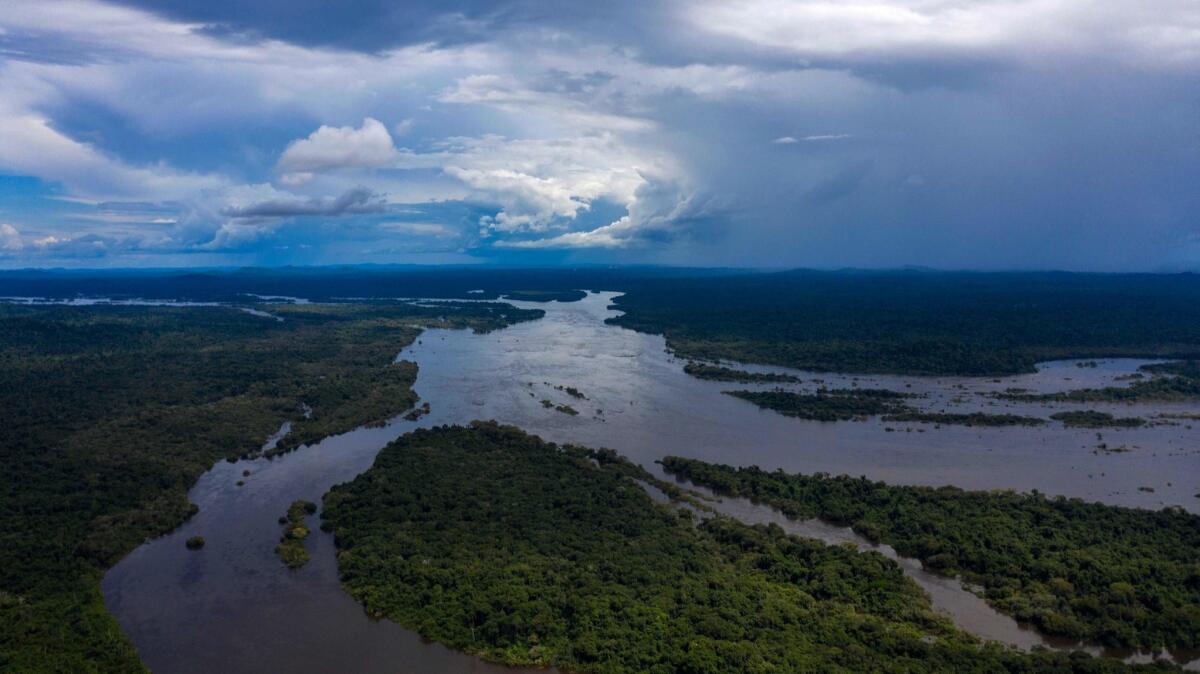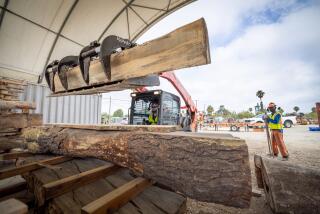Op-Ed: California may let polluters offset carbon by preserving rain forests. Here are the pitfalls

California, a global leader on climate change, is poised to take the lead once again as it considers expanding its carbon offset program to allow polluting companies to compensate for their excess emissions by paying to preserve the Amazon rainforest.
That sounds like a winning proposition: The carbon preserved in trees spared from deforestation would cancel out the corresponding amount of pollution from, say, refineries. But as I found on a recent trip to the Amazon, forestry offsets are more complicated than they seem.
Proponents point to the urgent threat of deforestation and say that action is imperative, both for preserving ecosystems and for preventing the worst effects of climate change. When trees are destroyed, the carbon they have previously stored is released into the atmosphere.
But critics fear that forest offsets will give polluters a guilt-free pass to keep emitting carbon without canceling out the same amount.
Evaluating the impact such a program might have is difficult. Researchers are just beginning to understand the complexities of calculating the carbon bound up in forests. And there has been no comprehensive look at these types of offsets, collectively called REDD (Reducing Emissions from Deforestation and Forest Degradation).
Critics fear that forest offsets will give polluters a guilt-free pass to keep emitting carbon without canceling out the same amount.
To try to assess the potential for these forestry offsets for a ProPublica investigation, I examined their track record by reviewing thousands of pages of studies and technical reports, including one from Norway, the largest funder of REDD.
I found forests that had been cut down soon after credits were sold, and climate benefits that were smaller than what was claimed. Many countries, including Brazil, often leave out the effects of wildfires and hard-to-detect forms of tree loss, leading them to overestimate their forest protection, and thus their carbon reductions. Then there’s leakage, in which preserving one area just shifts deforestation to a less protected area. If there’s demand for a product that requires cutting down trees, production will simply move to an unprotected area, negating some of the carbon impact of the protected land.
The biggest hurdle is called additionality: Offsets are only effective if carbon reductions go above and beyond what would have happened without the offsets. But untangling the threads of cause and effect with forest offsets is often impossible. It is difficult to determine whether a forest was saved because of a polluter’s funding or because of preexisting conservation policies or because of something even more indirect, like a drop in the price of beef and soy.
I visited the site of the most renowned forest offset program, in the state of Acre, Brazil, which is expected to be the first to link up with California if the standard is approved. There, all this scientific hand-wringing seemed like a luxury. I met dedicated public servants trying to keep the forest standing and rural residents who told me they can’t make a living without cutting down trees.
Several officials there told me their priority was getting the money to support conservation. But one warned against looking too closely at the quality of the credits. “You are going to create a non-incentive to preserve,” he said.
Enter the Fray: First takes on the news of the minute »
The best we can hope for is a program that helps the climate in some unmeasurable way, said Barbara Haya, a UC Berkeley research fellow who studies the carbon market. “That’s what offsets are. And I think that’s the best of what offsets can be.”
Thus far, the stakes have been minimal. Forestry offsets have been used almost exclusively on the voluntary market, for green public relations campaigns and by well-meaning consumers. California could change that if it were to begin allowing forestry offsets. Although polluters in the state can only use offsets for a fraction of their emissions, it would set an example for other potential customers, including the airline industry.
In the next few weeks, a state legislative committee will consider the Tropical Forest Standard, a blueprint developed by the California Air Resources Board, for how intercontinental forestry offsets could work. The committee may make recommendations. The Air Resources Board will then decide whether to approve the standard. Any potential purchase of tropical offsets would require additional board action.
The world will be watching as California tries to hone a formula that adds up.
Lisa Song is a Pulitzer Prize-winning reporter who covers the environment, energy and climate change for ProPublica, a nonprofit newsroom based in New York. ProPublica.org.
More to Read
A cure for the common opinion
Get thought-provoking perspectives with our weekly newsletter.
You may occasionally receive promotional content from the Los Angeles Times.










